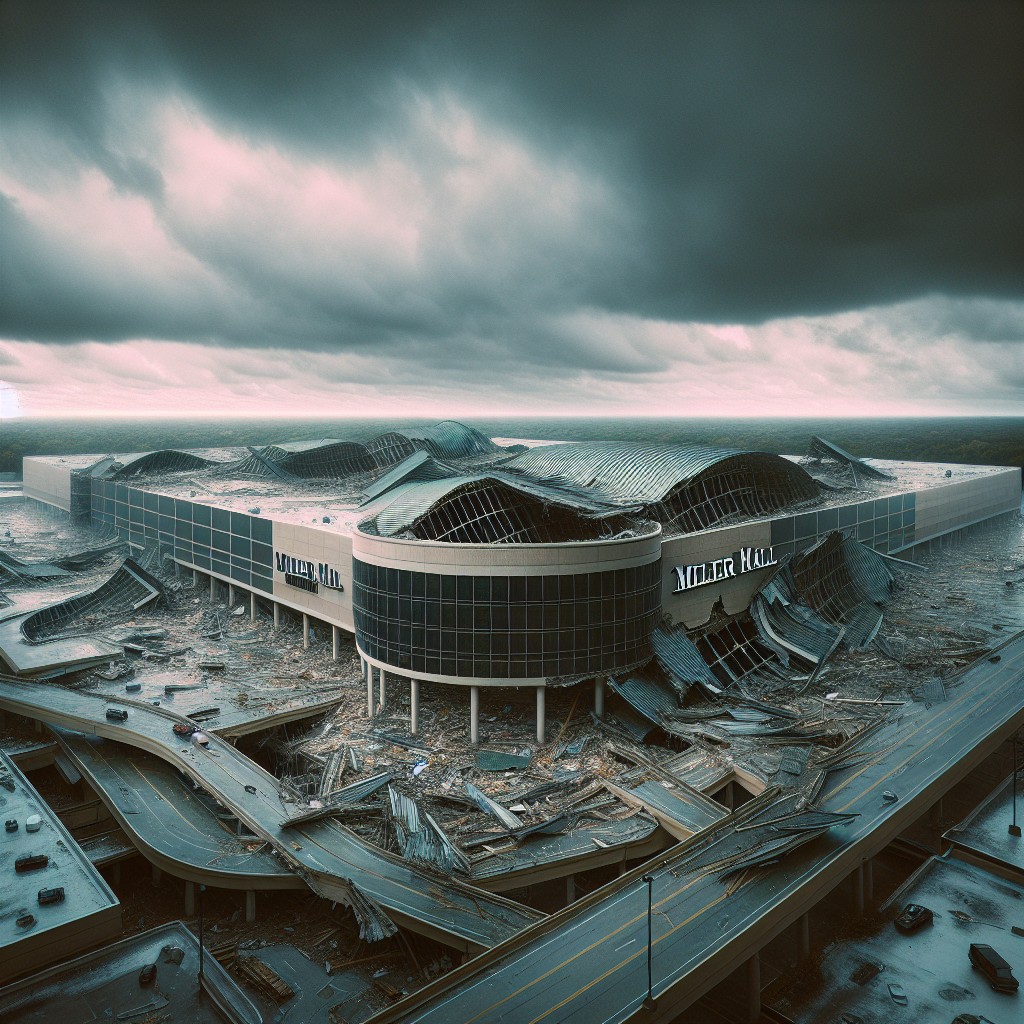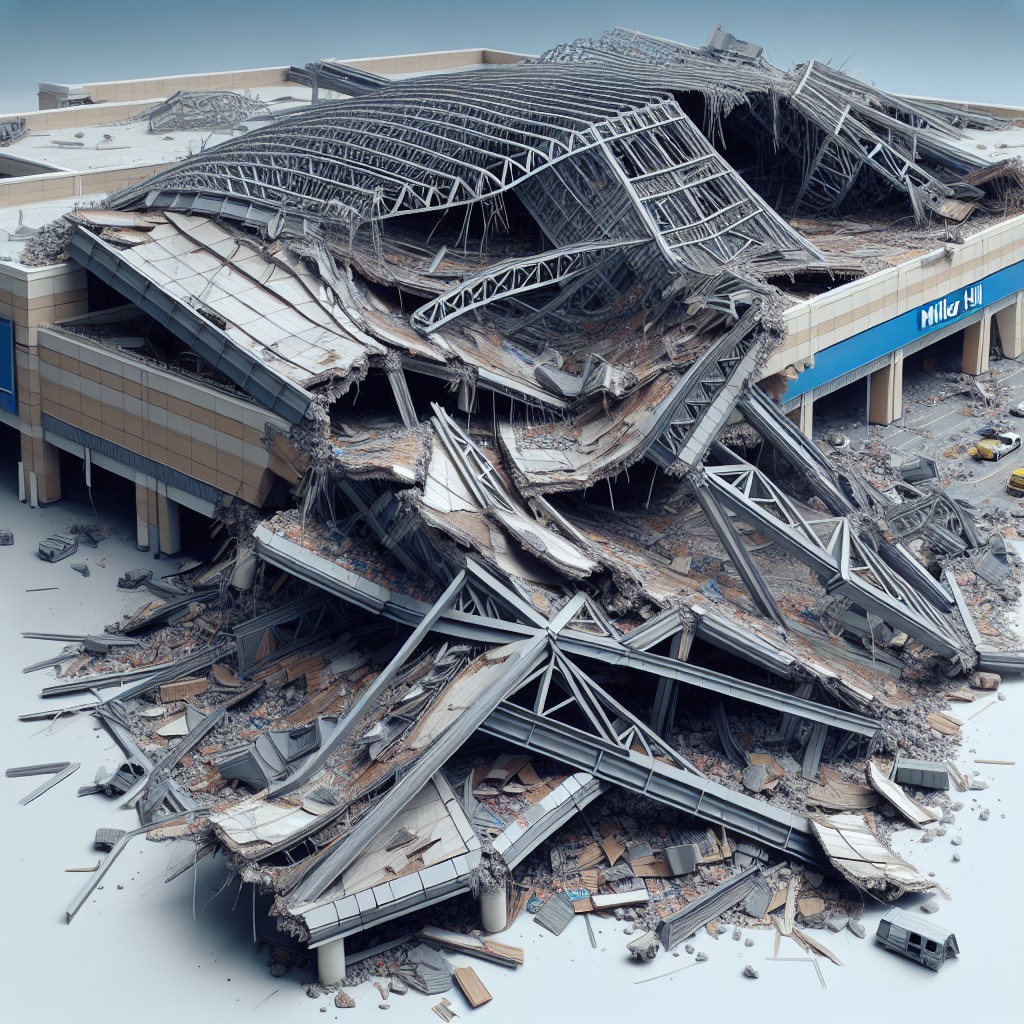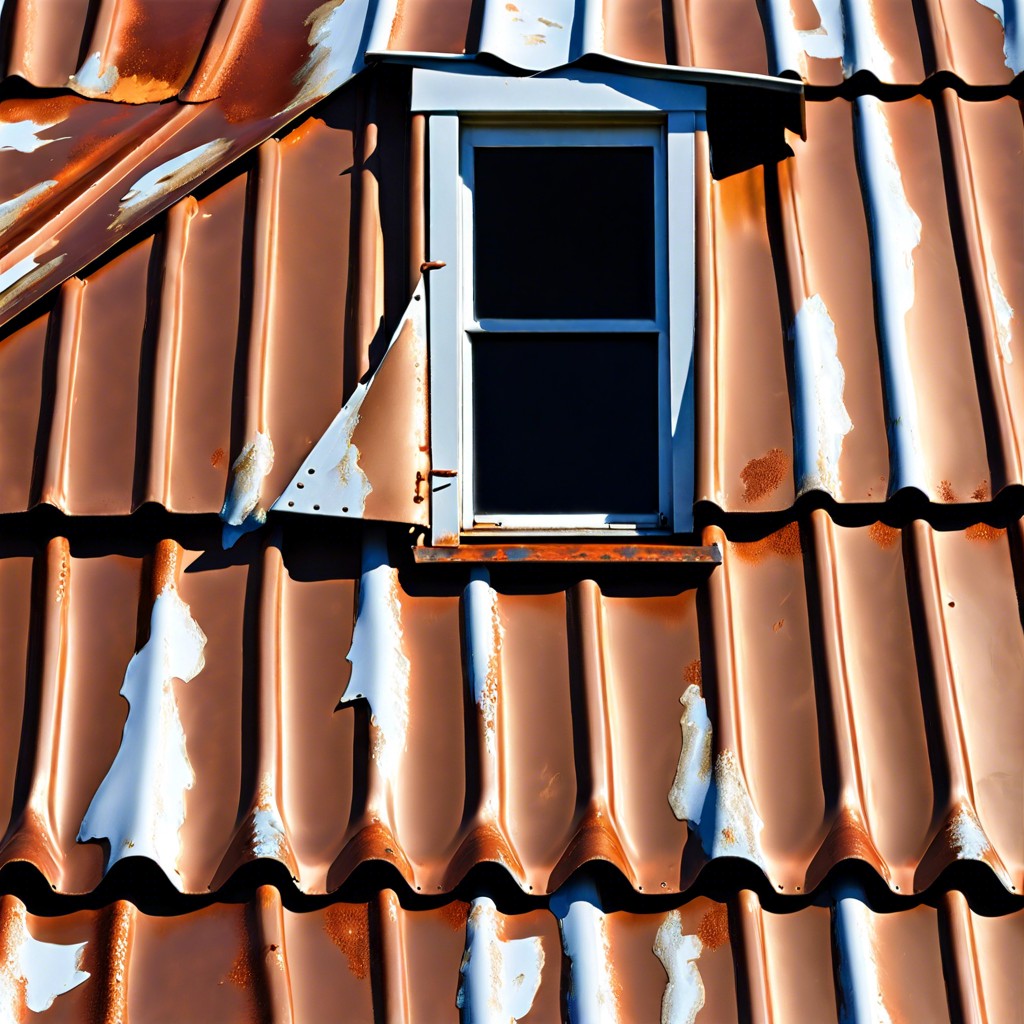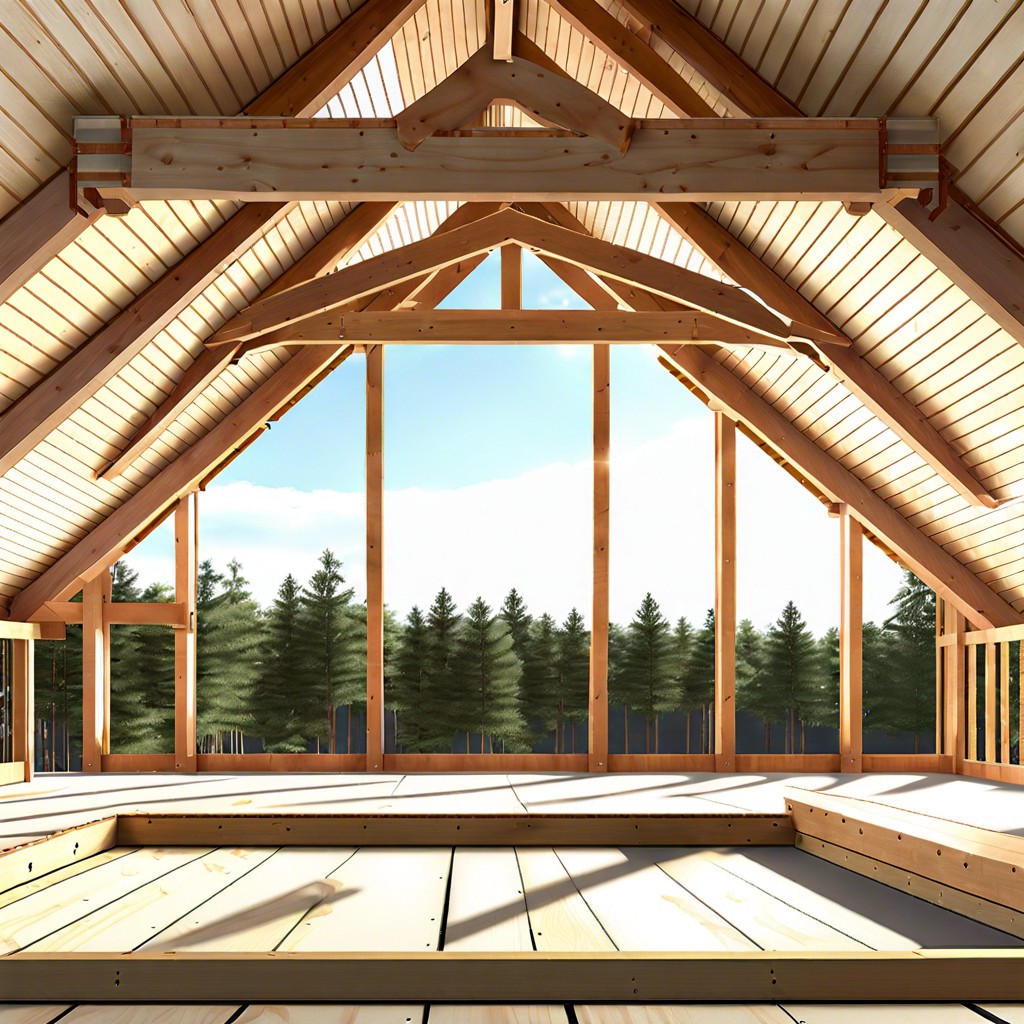Last updated on
Unravel the mystery surrounding the Miller Hill Mall roof collapse because the breakdown offers tantalizing insights into crucial aspects of architecture and construction safety measures.
The structural integrity of Miller Hill Mall was compromised following a catastrophic roof collapse, a stark reminder of the punishing force of nature when heavy snow meets human engineering.
This incident not only halted daily commerce but also triggered a swift emergency response to ensure public safety.
As investigations unfold to pinpoint the exact causes—from the weight of the snow to potential construction weaknesses—retailers and shoppers alike grapple with the immediate consequences on business and the community.
Unpacking the elements that contributed to this calamity provides essential insights for architects, builders, and property owners, with the aim of fortifying our structures against similar disasters.
In the following discussion, we dissect the incident at Miller Hill Mall, scrutinize the factors at play, and consider the broader implications for commercial structural safety.
Key takeaways:
- Roof collapse occurred at Miller Hill Mall due to heavy snow accumulation.
- Factors leading to collapse: snow accumulation, inadequate drainage, material fatigue.
- Mall closures affected businesses, logistics, and revenue.
- Emergency services responded promptly to secure the area and aid victims.
- Investigation underway to determine causality and inform future safety measures.
Event Chronology

On a brisk winter morning, as shoppers frequented the Miller Hill Mall, the unexpected occurred. Without warning, a section of the roof succumbed to the weight of heavy snow accumulation, resulting in a collapse. Providing a precise chronology, the incident began at approximately 9:30 AM, shortly before peak shopping hours. Initial reports of creaking sounds emerged from employees and early customers near the affected area, signaling the onset of structural distress.
Within minutes, these auditory warnings culminated in the partial collapse of the roofing system over one of the mall’s primary corridors. Fortunately, the area was not densely occupied at that moment, which minimized injuries. Emergency services were dispatched immediately, and the mall was evacuated by 9:45 AM to ensure public safety.
The aftermath saw the mall’s closed sections to facilitate structural inspections, determining the extent of the damage. While this event was isolated to a particular subsection of the roof, the interruption rippled throughout the mall, affecting the day’s operations. This sequence of events underscores the importance of prompt attention to potential safety hazards and the effectiveness of the emergency response in averting a more serious crisis.
Structural Failures Identified

Upon thorough examination, experts pinpointed several key factors leading to the roof collapse. Foremost is the potential for heavy snow accumulation, which can exert excessive weight on a structure. Inadequate drainage design may have further exacerbated this issue, as melting snow could have accumulated instead of being channeled away, progressively stressing the roof structure.
Furthermore, material fatigue or deterioration over time, especially in older buildings, can compromise the roof’s ability to withstand added weight. The investigation also explores whether the design and maintenance standards were met or if oversight during inspections played a role. These insights are crucial in determining causality and will inform future preventive measures to mitigate such incidents.
Impact On Businesses and Operations
The roof collapse at Miller Hill Mall had immediate and significant implications for local businesses. Store closures were necessary, both for those directly affected by the collapse and neighboring outlets due to safety concerns. This interruption in operations resulted in revenue loss and disrupted the livelihoods of employees who were unable to work during the closure.
Businesses also faced logistical challenges, such as retrieving merchandise from the affected area and finding temporary storage solutions. Customer access limitations further hampered sales, as foot traffic is vital for retail success.
Behind the scenes, management teams grappled with insurance claims and the potential for increased premiums. Some businesses also considered investing in structural assessments of their own properties to prevent similar incidents.
In the broader scope, suppliers to the affected stores contended with order cancellations and payment delays, highlighting the interconnected nature of business operations and the ripple effects that an event of this magnitude can have on an entire economic ecosystem.
Safety Measures and Emergency Services Response
Immediately after the collapse, emergency services were promptly dispatched to secure the area and search for potential victims. The quick activation of first responders played a critical role in ensuring the safety of mall patrons and employees.
Here’s how the situation unfolded:
- The mall was evacuated to prevent injuries and enable a thorough search and rescue operation.
- Firefighters assessed the structural integrity of adjacent areas to prevent further incidents.
- Police cordoned off the site to facilitate emergency operations and maintain public safety.
- Building inspectors were called to the scene to examine the causes and extent of the collapse.
- Emergency medical services (EMS) stood by to provide immediate care for any injuries.
- A temporary shelter was set up for displaced individuals and those affected by the event.
The collaboration between various emergency services ensured that the immediate dangers were mitigated and the mall was rendered safe for investigators and engineers.
Investigation and Assessment By Authorities
Following the collapse, authorities immediately launched a comprehensive investigation to uncover the root cause of the incident. Building inspectors and structural engineers converged on the site, meticulously examining the wreckage to identify any design flaws or maintenance issues.
They inspected support beams, roofing materials, and connection points while also reviewing the mall’s historical blueprints and recent renovation activities.
A key aspect of the probe involved evaluating the snow load on the roof at the time of the collapse, alongside weather conditions that may have contributed to the structural failure. This information is critical for determining whether the mall met the applicable safety standards for handling extreme weather.
Authorities also reviewed compliance with local building codes and whether regular maintenance checks were adequately performed. Interviews with mall management and maintenance staff provided further insights into operational practices and the potential warning signs prior to the collapse.
The findings of these investigations will influence future safety protocols and construction practices, ensuring structures can better withstand similar challenges and protect public safety.
Repair and Reconstruction Efforts
Following the assessment by structural engineers, repair and reconstruction efforts commenced swiftly to ensure the safety and integrity of the structure. Key components of these efforts include:
- Stabilization: The immediate focus was on stabilizing remaining structures to prevent further damage. This involved the use of supports and shoring systems designed to provide temporary stability during repairs.
- Debris Removal: Specialized teams systematically cleared debris to allow for thorough inspections and to lay the groundwork for rebuilding operations.
- Material Assessment: Experts evaluated the salvageability of materials from the original structure, determining what could be repurposed and what required replacement.
- Design Improvements: In light of the collapse, architects and engineers incorporated enhanced design elements aimed at reinforcing the roof’s durability against extreme weather and load bearing.
- Building Code Compliance: Reconstruction plans were reviewed to ensure adherence to updated building codes, potentially involving new materials and construction techniques for improved safety.
- Timely Execution: Project managers coordinated the rebuild, working meticulously to minimize disruptions to mall operations and to reopen affected sections as quickly as possible, without compromising on quality or safety.
These steps form a deliberate process to restore the mall fully, prioritizing the safety and security of future patrons and businesses.
Implications for Building Codes and Regulations
The collapse of the Miller Hill Mall’s roof has raised important considerations for revising building codes and regulations. The incident emphasizes the need for:
- Stringent Inspection Protocols: Rigorous and more frequent structural inspections are necessary to detect potential weaknesses in existing constructions.
- Updated Load Requirements: Re-evaluating snow load standards to ensure that structures can withstand extreme weather conditions pertinent to the region.
- Enhanced Construction Materials: The promotion of using higher quality materials that better resist environmental stressors.
- Implementation of New Technology: Integration of smart sensors and monitoring systems for real-time assessments of structural integrity.
- Education and Training: Ensuring that architects, engineers, and builders are well-versed with the current best practices and safety requirements.
- Disaster Mitigation Planning: Developing comprehensive plans to manage and mitigate potential roof collapse scenarios and their aftermath.
These points suggest a proactive approach to building safety, underscoring the necessity for upgrades and education to prevent future incidents of similar nature.
Support for Affected Employees and Businesses
Following the incident at Miller Hill Mall, immediate assistance has been rolled out to those impacted economically. Local employment services have stepped forward with resources to aid displaced workers, offering job placement assistance and unemployment benefits guidance.
Concurrently, business owners have access to emergency grants and low-interest loans to promote a swift return to operation.
Community-driven crowdfunding campaigns have also seen a rise, demonstrating solidarity and a collective effort to support local enterprises affected by the collapse.
Furthermore, mental health support groups are available, addressing the psychological aftermath among staff and proprietors.
Insurance companies are expediting claims processing for the incident, ensuring that recovery funds are distributed rapidly to facilitate repairs and inventory replenishment.
The combined local and broader support scaffold aims at mitigating financial strain and expediting a return to normalcy for all parties involved.
Community Reaction and Support Initiatives
In the wake of the collapse, the community’s solidarity was palpable. Local citizens rallied to extend aid and resources to the affected businesses and employees. Volunteer groups were quick to coordinate efforts, providing meals and job resources to those suddenly facing unemployment.
Several fundraisers sprang up almost immediately, underlining the community’s commitment to supporting the recovery process. Social media buzzed with information about these initiatives, helping to amplify their reach and efficacy.
Area schools and community centers opened their doors as temporary meeting spots for displaced workers and companies to regroup and strategize. These gestures of support exemplified a community united not just by proximity, but by a genuine concern for its members’ welfare.
Local officials and business leaders collaborated to set up information sessions and workshops aimed at navigating the aftermath of the collapse. These not only offered immediate assistance but also provided insights into long-term recovery and resilience planning.
The spontaneous outpouring of community support in the aftermath showcased the inherent strength and compassion of the local populace. It served as a testament to the area’s resilience and underscored the significance of community ties in times of crisis.
Ongoing Monitoring and Prevention Strategies
Following the incident at Miller Hill Mall, continuous surveillance has been implemented to detect any signs of structural weakness in similar buildings. This strategy includes:
- Regular inspections by qualified engineers to assess structural integrity and ensure compliance with safety standards.
- Installation of real-time monitoring systems that use sensors to detect shifts or stresses in the building’s framework, providing immediate alerts to any potential issues.
- Revision of maintenance schedules to prioritize roof inspections, especially after severe weather events which might compromise the roof’s stability.
- Guided training for mall staff and management on emergency procedures and how to recognize early warning signs of structural failure.
- Engagement with roofing specialists to evaluate current materials and designs, potentially leading to upgrades that bolster roof resilience.
- Collaboration with local authorities to develop community-wide disaster preparedness plans, including the possibility of structural reinforcements for older buildings.
These proactive measures aim to ensure the safety of patrons and employees, safeguarding against future risks.
FAQ
Did the Miller Hill Mall roof collapse?
Yes, the roof of the Miller Hill Mall in Duluth did collapse.
Who owns Miller Hill Mall?
The Miller Hill Mall is owned by Simon Property Group.
What were the resulting damages of the Miller Hill Mall roof collapse?
The Miller Hill Mall roof collapse resulted in substantial structural damage, but recorded no injuries.
How was the incident of the roof collapse at Miller Hill Mall resolved?
The roof collapse incident at Miller Hill Mall was resolved through immediate evacuation, followed by a thorough inspection and repairs by professional structural engineers.
What safety measures were put in place at Miller Hill Mall post the roof collapse incident?
Post the roof collapse incident at Miller Hill Mall, safety measures implemented included conducting regular structural assessments, reinforcing load-bearing structures, and installing advanced warning systems.




